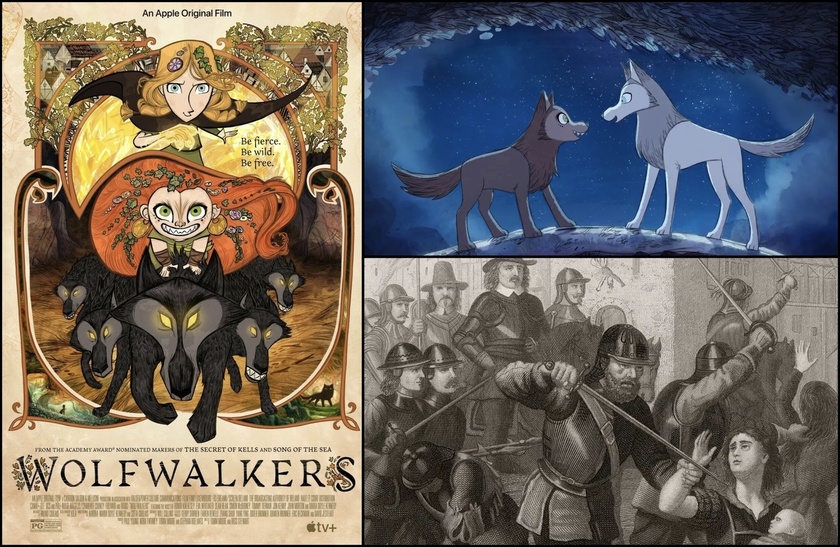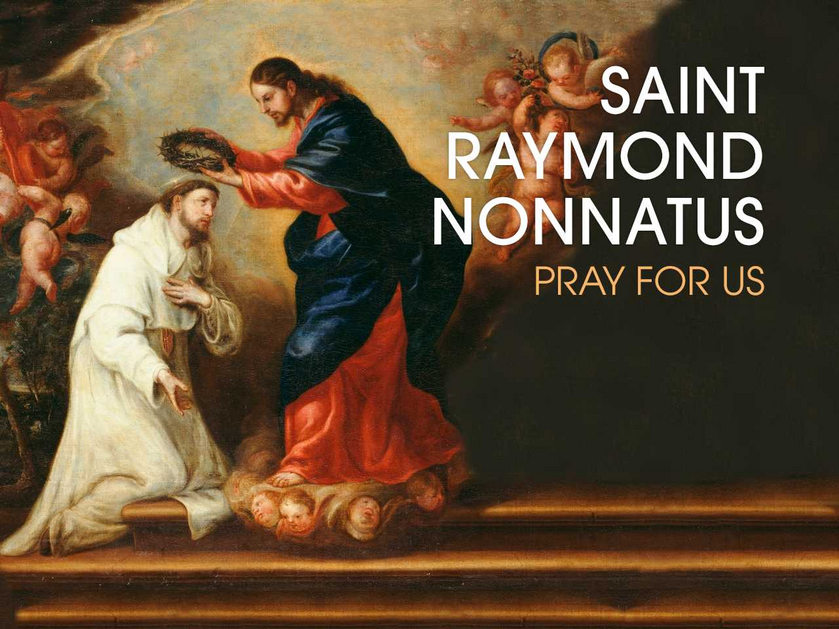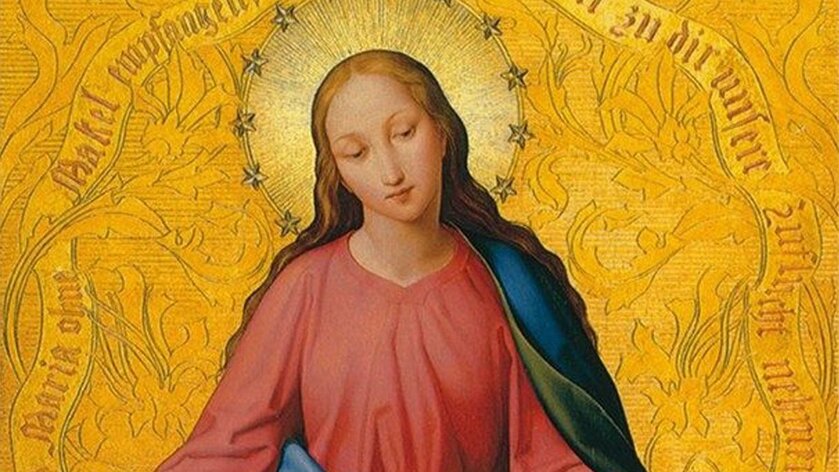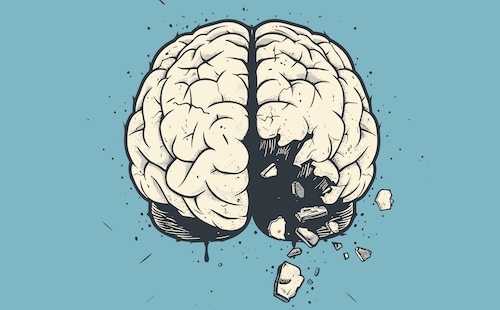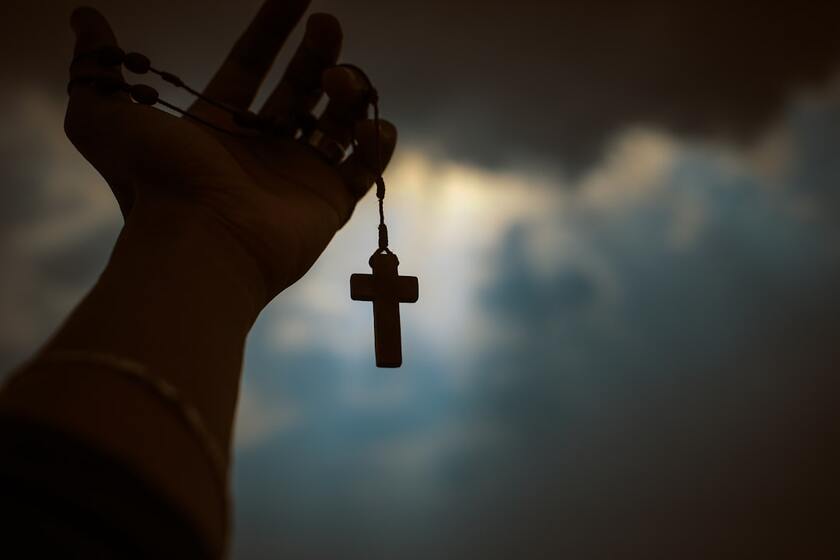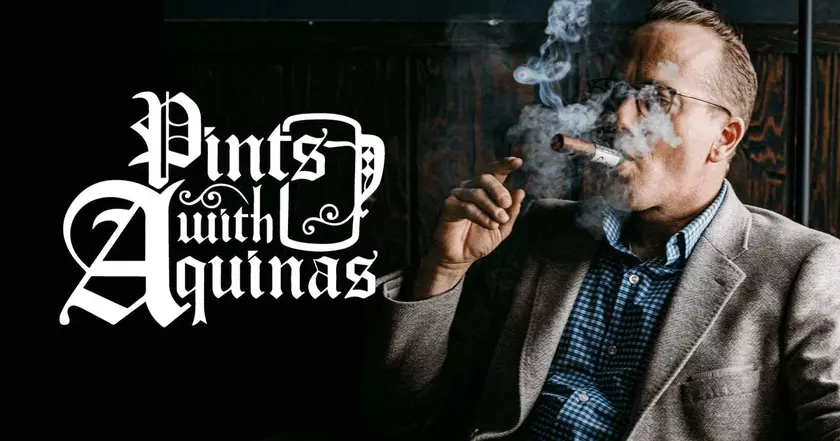Pop-Cultured Catholic #41: How “Wolfwalkers” Was Influenced By the Historical Divide Between Irish Catholics and English Protestants
After many months of this series being on hold, I have finally done another pop-culture post. This time, I am diving into one of Apple TV+’s original animated films, “Wolfwalkers”. Besides its charming art style, twist on the werewolf archetype, and cliched but still well executed plot, this children’s fantasy has an unexpected inspiration. Namely, the story’s subtext is loosely rooted in old conflicts between Catholics and Protestants in the British Isles, especially during the time of Puritan Lord Protector Oliver Cromwell.
“Wolfwalkers” is set in Kilkenny, Ireland during 1650 and its plot centers around a rebellious English girl named Robyn Goodfellowe, who initially wants to help her father hunt the wolves scaring the townsfolk. The movie opens with the city’s woodcutters clearing the forest, until an unusually large pack of wolves confronts them. A lopsided fight breaks out, and one of the overwhelmed woodcutters gets scratched. However, a mysterious redhead woman and her daughter emerge from the woods. They call off the wolves, magically heal the man, and leave. The thankful man recognizes them as mythical Wolfwalkers. Following this incident, the narrative introduces its main character, a young tomboyish girl named Robyn. Reminiscent of Merida in Pixar’s “Brave”, Robyn forgoes her chores to practice shooting targets with her crossbow. Her father named Bill is an English wolf hunter, voiced by Sean Bean, and she longs to help him. Robyn secretly follows him out the city walls and brings along her pet falcon named Merlyn. While trying to aid a panicked shepherd, Robyn misses her shot and accidentally wounds Merlyn. Right as Bill spots her and rushes to take her away, Robyn sees the redhead girl from earlier take away her injured pet. She then sees the woodcutter relaying his account, while also criticizing the city’s foreign rule under the English Puritan Lord Protector. Sneaking up from behind, the unnamed Lord Protector is incensed, arrests the man, and calls upon Bill to eradicate the wolves: “A few more like him and we have another rebellion on our hands… If we do not clear the trees, the farmers cannot work the land. And the woodcutters cannot clear the trees with these wolves”.
After Robyn’s botched attempt to help her father hunt the wolves, she learns more about the mythical Wolfwalkers, creates a distraction, then runs back out into the woods in search of her lost pet falcon. Robyn overhears the woodcutter warning that they needlessly provoke conflict by invading the Wolfwalkers’ homeland rather than negotiating a deal with them: “Saint Patrick made it with the old pagans and you're breaking it, you eejits!”. This is the only time Saint Patrick is mentioned in the film. But the graphic novel version and a supplementary Saint Patrick’s Day greeting video show more. In the movie’s universe, when Saint Patrick was evangelizing the Irish pagans, one group of druids refused to convert to Catholicism, howling like wolves when he preached. “Some say that Patrick cursed them, others that he blessed them. But the result was the same. Evermore, they would walk as people by day and ran as wolves by night. Leaving their human form behind, any harm or good that befell them as wolves, they felt in their waking form too. They were a proud breed living with the wild wolves, keeping the peace between Man and the wilderness”. As the woodcutter is carted away, he also tells Robyn of their healing powers. Agreeing to keep a secret, he watches Robyn release some sheep to cause chaos and run back into the woods.
Robyn finds her pet alive and well, but then a small red wolf appears, which turns out to be the younger Wolfwalker from the prologue, Mebh. Merlyn intervenes to prevent Robyn from shooting it, and she walks back into a snare. The red wolf is curious and playful towards Robyn, then tries to get her down by biting the rope, which Robyn misinterprets as an attack. The wolf succeeds, but not before accidentally biting Robyn in her struggle. Now it leads the freed and surprised Robyn deeper into the woods, until they come across the redhead woman and girl from earlier, soundly asleep. In keeping with the Werewolves of Ossory legend from Medieval Ireland, the Wolfwalkers do not have their human bodies turn into wolves or wolf-men. Rather they conjure a wolf form, which they control in their sleep like the titular beings in James Cameron’s “Avatar”. The wolf magically enters the sleeping girl’s body and she wakes up, introducing herself as Mebh. Mebh quickly heals Robyn’s wound, hinting that the bite will pass on her power if it is healed too late. From there, Mebh introduces Robyn to her wolf friends, toys with her a bit more, and starts a friendship. Mebh also reveals that her mother Moll has yet to awake, for she has mysteriously failed to return in her wolf form. After returning to work at the Lord Protector’s manor, Robyn hears a ghostly woman’s voice coming from a chamber, which he has declared off-limits. Robyn also unsuccessfully tries to open up to her father Bill, who does not believe the tales of the Wolfwalkers. Her plan to forge a peaceful coexistence between the citizens of Kilkenny and the Wolfwalkers is shot down for now.
Later that night, Robyn learns that Mebh accidentally bestowed her power onto her. To her surprise, she becomes a wolf and the unaware Bill spots her. She flees the town, leaving behind her asleep human self, then meets back up with an equally stunned Mebh. After the girls bond more in their wolf forms, Robyn sneaks back into the town and infiltrates the Lord Protector’s manor. Caged inside his forbidden chamber, she finds a supersized red wolf, Mebh’s transformed mother Moll! Moll tells Robyn that the Lord Protector plans to burn the forest to wipe out the wolves, so Mebh and the pack must leave.
Following the revelation that Mebh’s mother is imprisoned in wolf form by the town’s Lord Protector, Robyn’s wolf form returns to her human body, and she fails to avert the coming conflict. Robyn relays Moll’s message to Mebh but is afraid to let Mebh endanger herself trying to save Moll, causing friction. With the townspeople growing restless over sighting Robyn’s wolf form inside the city walls, the Lord Protector unveils his plan against Robyn’s protests. The Lord Protector makes it clear that he is a prejudiced fanatic ruling with an iron-fist, somewhat similar to Judge Claude Frollo in Disney’s “The Hunchback of Notre Dame”. Displaying the chained and muzzled Moll as a live trophy, he promises to “tame” the lands and peoples of Ireland in his quest to mold them into an English Puritan state. He also summons Bill, demotes him for his apparent failure, then demands that Bill lead his soldiers in the wolf purge as his last chance under pain of punishment. Mebh witnesses this and tries to free her mother. In the scuffle, Bills tries to restrain Mebh and Moll bites him, spreading her power to Robyn’s dad. Mebh is forced to flee, but vows to attack with all the wolves she knows, further instigating the town to mobilize. Luckily, Robyn attempts to free Moll herself and succeeds at last, riding on Moll’s back out of the city.
The film builds to a climax, where Robyn’s father seriously wounds Mebh’s transformed mother, but eventually has a change of heart and helps Robyn, Mebh, and the wolf pack against Kilkenny’s Lord Protector and his band of soldiers. Now that Robyn has helped reunite Moll with her daughter, Mebh forgives her and calls off the raid on Kilkenny. However, Bill has followed them and shoots at the transformed Moll, grievously wounding her. When Bill then tries to “save” Robyn, he is taken aback to see Moll’s wolf avatar take a more ghostly form and float over to reunite with Moll’s unconscious body. Mebh desperately tries to heal her mother’s injury, while Robyn reveals she too is a Wolfwalker. Bill is conflicted and the Lord Protector’s forces are closing in with fire, guns, and even a cannon. Robyn leads the wolves to ambush and route the invaders. In the middle of it all, Mebh deduces that her power will not be strong enough to heal her mom without the rest of the pack surrounding her. While Mebh calls the other wolves back, Robyn is knocked down after sabotaging the cannon, leaving only the Lord Protector himself. Longing to protect his daughter and now empowered by his earlier bite, Bill releases his own gigantic wolf form and fights the Lord Protector. With a bit of unexpected help from Robyn’s crossbow skills, Bill overpowers the antagonist and happens to bite through his armor in the process of subduing him. The Lord Protector dreads the thought of either becoming a Wolfwalker or having to humbly ask the “devils” to heal him, so he sees the nearby cliff as his only escape. He releases his armor and falls, praying “Into your arms, my Lord, I commend my soul”. The movie ends with Robyn and Bill now entering the grotto to join Mebh as she finishes healing Moll. The four Wolfwalkers now live on with newfound friendship.
When “Wolfwalkers” ties Saint Patrick into the titular werewolves’ backstory, there seems to be a potential homage to how Ireland first became Catholic. Christianity was first introduced to Ireland by Catholic missionaries in the 5th century, the most famous being Saint Patrick. Some details of Patrick’s ministry are vague and left up to legend. But one narrative I have come across is how the Irish pagans were reportedly welcomed to retain some of their earlier trappings and customs, allowing them to honor their cultural heritage while living out their new lives as Catholics. The Celtic Cross, for example, has sometimes been ascribed to Patrick’s legends and viewed as a blending of Christian and pagan icons. One interpretation is that the Celtic sun symbol harmonizes with the cross, which stands in front as if to lead, representing Ireland’s relatively peaceful conversion. This seems to mirror the film’s lore, where Saint Patrick not only negotiated with the druids who would become the Wolfwalkers, but also bestowed their power as a potential blessing rather than necessarily a curse.
While the plot follows a typical formula of two children from different communities overcoming prejudices and fears of “the other” to become friends, the filmmakers’ revealed that one of their main inspirations for using Medieval Ireland’s backdrop was the historical tensions between Irish Catholics and English Protestants. After the Church’s schism in the wake of Martin Luther’s Reformation campaign, Ireland remained Catholic while England became Protestant in the 1530’s. Around the rest of Europe, Catholics and Protestants began to persecute each other. Amidst these already volatile tensions, England would begin a political conquest of Ireland. In an interview with Christian Post, the film’s Irish director Tomm Moore stated this bitter history influenced his themes. While some members of the filmmaking team presume the feud ended centuries ago, Moore lamented, “it’s coming back this divide between Catholics and Protestants in Ireland… It's unfortunate… I think the whole world has gotten more and more divided… When I was a kid in the '80s in Northern Ireland, there was that really obvious divide, but now when you look around the world, it seems like there are more and more people taking sides and seeing other groups of people, as 'the other.' And rather than focusing on what they have in common, they kind of focus on pretty small differences”. The article summarizes the writer’s goal: “By making a film in which a ‘little English girl from the original colonization arrives and makes friends with a little Irish girl from the really ancient Irish indigenous population,’ Moore said, he hopes to encourage viewers to have empathy for one another despite differences… ‘With this film, in particular, I think a lot of people are responding to the fact that there are these two girls that are supposed to be enemies. But they managed to be friends and bring a lot of healing to their community… There’s hope and healing. And maybe people are just needing a bit of fun and fantasy. It’s been a tough year for a lot of people’”.
In particular, the movie’s antagonistic Lord Protector was inspired by the legacy of England’s Puritan Lord Protector, Oliver Cromwell, who contributed heavily to the extinction of Ireland’s wolves and was reputed by the Irish as a tyrant. Oliver Cromwell was a revolutionary in the English Civil War, which led to King Charles I’s execution and some royalists fleeing to Ireland. He sought to maintain England’s colonial power and stamp out perceived enemies of the new state and its religion, influencing his choice to partake in the reconquest of Ireland. During this, many Catholics lost their lands and even faced massacre. Also, Cromwell instituted highly profitable bounties on wolves in Ireland. Moore states how the fictional unnamed Lord Protector drew from Cromwell’s reputation: “Religion there got mixed up…The big part of why Lord Protector was so hard on Kilkenny was because the city was the capital of Catholic Ireland. By destroying the spirit of the people here, they were kind of making a statement that it was the new Protestant world. So it was politics at work”. Co-director Ross Stewart adds this in an LA Times article: “Part of the English leader’s legacy is how he worked to rid Ireland of wolves. Whatever the practical motivations, wolves once thrived on the island and are prominent in Irish folklore, so wiping them out was symbolic of his conquest. ‘Wolves were the last megafauna in Ireland to go completely extinct… With the extinction of wolves, so much of a connectedness to that animal is also gone from our society. You’re not just losing the animal, but you’re also losing a whole part of human culture and human society with it. And once it’s gone, it’s gone forever’”.
To conclude this, here are some clips of the film and its marketing, plus some articles on the Celtic Cross and the filmmakers’ interviews…
1.) Trailer:
https://www.youtube.com/watch?v=d_Z_tybgPgg
2.) Saint Patrick’s Day Greeting:
https://www.youtube.com/watch?v=xkq5Ne6sbgU
3.) Robyn and Mebh's First Night:
https://www.youtube.com/watch?v=dqDfwOEsBj4
4.) Displayed Moll:
https://www.youtube.com/watch?v=fUlEKEqwC-I
5.) Bill vs. Lord Protector:
https://www.youtube.com/watch?v=YfDGjsteYOo
6.) Epilogue:
https://www.youtube.com/watch?v=YzTDZW1khLw
7.) Celtic Cross:
https://www.irishcentral.com/roots/history/celtic-cross-meaning.amp
8.) Christian Post Interview:
https://www.christianpost.com/news/wolfwalkers-inspired-by-divide-between-irish-catholics-protestants.html
9.) LA Times Article:
https://www.latimes.com/entertainment-arts/movies/story/2020-12-31/wolfwalkers-animation-tomm-moore-ross-stewart



